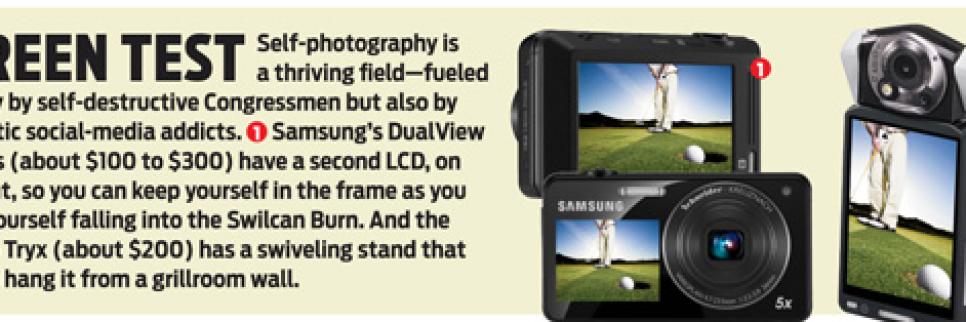Golf's Funniest Home Videos

Fifteen years ago, my wife and I became the last people in America to buy a video camera. We did it at the insistence of our children, whose sole criterion in judging human behavior was whether the behavior, if videotaped, would have a chance of being shown on "America's Funniest Home Videos." They lost interest as soon as they realized that nothing hilarious -- such as a poodle walking on its front legs or a car driving into a swimming pool -- was likely to happen in our yard.
And I lost interest, too -- until recently, when I noticed that I, like most Americans, had accidentally become the owner of a vast inventory of video devices: my regular camera, my other regular camera, my wife's regular camera, our smartphones, my laptop, a clip-on thing from Staples, and, for all I know, our microwave oven. I also own a Flip, a (now obsolete) pocket camcorder that is famous for being so basic that even a middle-age idiot (ahem) can figure it out. Not long ago, it occurred to me that I might be able to put some of that hardware to a golf-related use -- which is my sole criterion for judging human behavior.
The main rule regarding golf and video cameras is, "First, do no harm." Most amateur golfers are not emotionally prepared to see what they look like when they play golf, and they should therefore observe their swing only on the advice of a trained professional, if then. A teacher of mine once used a camcorder to identify and treat a flaw in my technique, but, tragically, he let me see the video, and I spent a couple of years getting over the shock. I had assumed that I swung more or less like Ernie Els; on the screen, I was closer to Miguel Angel Jimenez warming up (search YouTube for "Miguel Angel Jimenez warming up").
Watching yourself putt is less traumatic. Six years ago, this magazine treated me to a swing makeover. The regimen included a high-tech clubfitting at Hot Stix Golf, in Scottsdale, and, among other things, I spent half an hour in the Hot Stix "putting studio," where I was able to study slow-motion close-ups of my apparent determination to strike the ball with every part of the putterface except the center. The videos were discouraging but not humiliating, and they helped me become a better golfer, at least temporarily.
Recently, I created something similar in my office. I mounted my best regular camera (which, in addition to taking snapshots, shoots high-definition video) on a 54-inch tripod and pointed the lens straight down. Then I positioned my second-best camera just above the carpet, and aimed the lens along the floor, at 90 degrees to the first. To mount the lower camera, I used a GorillaPod, which is a miniature tripod that has knobby, flexible, articulated legs (mine was $39.95 at joby.com). The GorillaPod was invented by JoeBen Bevirt, who was raised on a hippie commune in California in the 1970s; it has many potential golf applications, because you can use it to attach a camera to a golf bag, a ball washer, the head of your driver, the head of your golf buddy, or almost anything else -- and then turn on the self-timer. (The popularity of the GorillaPod has helped enable Bevirt to invest millions in another invention of his: a kite-borne wind turbine.)
My home putting studio isn't as fancy as the one at Hot Stix, but it confirmed my lingering suspicion that coming over the top is something I do right through the bag, from the driver down. As I replayed my videos frame by frame, I could watch my putterhead veer outside the target line and then loop back in, and with some practice I got myself more or less straightened out. I also confirmed something I'd noticed on the golf course: that I make a better stroke when I look at the target instead of the ball.


